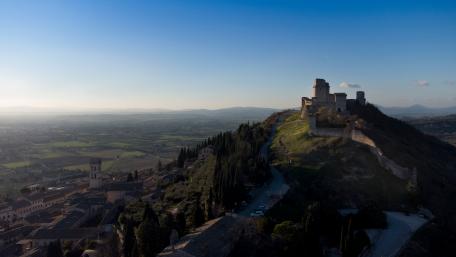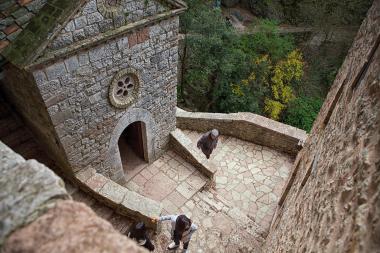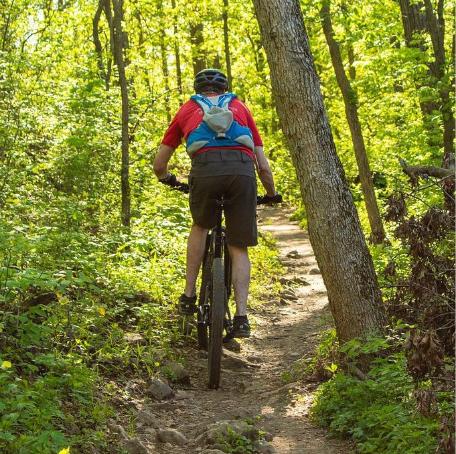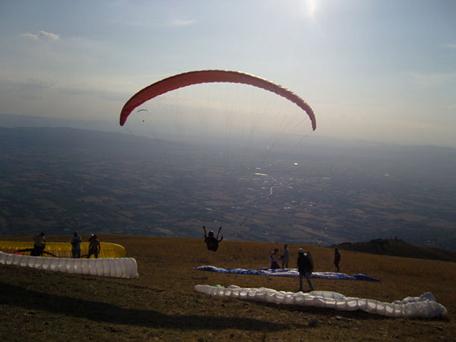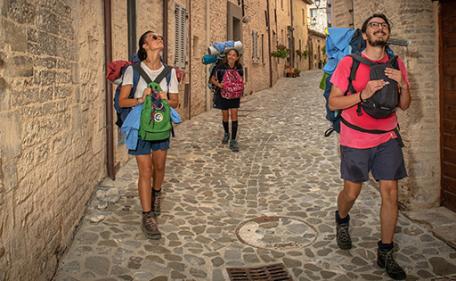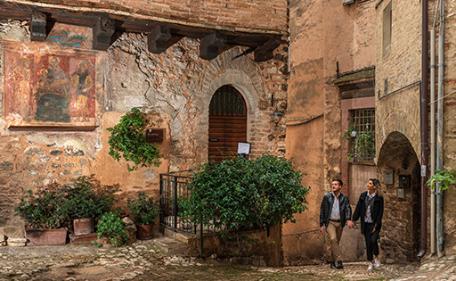Breakfast and departure. Meeting with your local guide for a panoramic tour of Imperial Rome: Colosseum, Roman Forum, San Pietro in Vincoli (S. Pietro in Vincoli does not belong to the Imperial Rome but it is very closed to Nero's Domus Aurea. Inside you will admire the great Mosè by Michelangelo, a work of incomparable beauty). The Colosseo or Anfiteatro Flavio is biggest amphitheater of the Roman world, it was erected on the site of an artificial lake. Begun in the year 72 AD, it was completed eight years later. The amphitheater has a diameter of 620 feet in its widest section and 490 feet in its narrowest. During its inauguration, which lasted for a hundred days five thousand wild animals were slaughtered. Animal entertainments formed a part of the games and normally took place in the morning, till noon. Executions were another common feature of the Roman games. They took place at midday as an interlude between the animal in the morning sessions ant the gladiatorial combat in the afternoon. Although the executions were seen as symbolizing Rome’s and Emperor’s powers the senators and the higher classes, who have the best seats for the show, normally took advantage of the interval to live the arena to dine. The executions of deserters, prisoners-pf-war-, criminals from the lower classes, first Christians, were crucifixions or damnationes ad bestias, in which they would fight, with their hands, face to face with wild animals. Shows were always free, with pre-assigned day and seat inside the theatre. The Roman Forum was the political, commercial, and religious center of ancient Rome. The project was made in the valley between the Palatine and the Capitol hills, not far from the Aventine hill and the river Tiber. The VIA SACRA, which traverse the Forum from north-west to south-east, was the main street used for impressive military parades. The Temples, the arches, the Basilicas inside the Forum were constructed over the course of 900 years. Lunch at leisure Take your time in the afternoon for shopping. There are many designated shopping areas in Rome: around Piazza di Spagna, via del Corso, Galleria Alberto Sordi, La Rinascente, via Condotti, via del Babuino, via Ottaviano, via Candia, via Giulio Cesare (near the Vatican), or you can decide to visit a big shopping mall (1 hour from Rome). Dinner in a really unique restaurant. You can find there the real authentic Roman recipes. Transfer back to your hotel and overnight. ALTERNATIVE EXPERIENCE: THE VATICAN Breakfast and departure with your private bus towards S. Pietro and Vatican Museums. Meeting with your private Guide. Morning devoted to the visit of the Museums, Sistine Chapel with Michelangelo fresco and other artistic frescoes made by Raffaello, Pinturicchio, Perugino. Sistine Chapel and Vatican Museums. Our expert native guide will whisk you through the labyrinth-like corridors of the museum, taking you directly to the Sistine Chapel without delaying a moment. After the tour you can spend your day inside the Museums, leisurely wandering its magnificent galleries at your own pace, allowing you to focus on what interests you. With an expert guide who will bring Michelangelo’s artwork to life The collection of art and treasures, including paintings, carpets accumulated by the Popes along the centuries can be seen at the Vatican Museums. The buildings that house the Vatican Museums cover an area of almost 6 hectares. Their construction has been a work in progress since the 5th century. The restructuring work of the Museums started after the signing of the Lateran Treaty. Pius XI commissioned Giuseppe Momo to construct a monumental staircase and Luca Beltrami to design a new PINACOTECA. Only parts of the Museums are open to visitors. The Sistine Chapel was completed in 1484 for Pope Sixtus IV, Sixtus IV commissioned to the best Tuscan and Umbrian painters to decorate the walls with frescoes. Michelangelo's "The Last Judgment" was the last of the chapel's decorations to be carried out. What's Included • Expert, English-speaking tour guide • Entrance Tickets and Reservation Fees Sites Visited • Sistine Chapel • Vatican Museums Lunch at leisure Afternoon guided tour of Piazza Venezia, Trevi Fountain and Quirinale Palace. Enjoy a private tour of the squares of Rome, starting from piazza Navona. We start a walking tour with PIAZZA NAVONA, that still preserves the shape of the Stadium of Domitian, built at the end of 1st century A.D. The central fountain of the Four Rivers was made by Bernini in 1651. From the low basin rises a rock, pierced in the middle, on which are arranged the figures of four rivers also symbolizing four continents: the Danube, the Ganges, the Nile, and Rio de la Plata. Just a few block away, there is the oldest monument in central Rome, the Pantheon. This monument was built by Hadrian in 120 AD. The temple dedicated to all gods (pan theon), had already been erected by Agrippa between 27 and 25 B.C. on the same site and in 609 it was converted into a Church, the first temple in Rome to be Christianized. The original temple was built to commemorate the victory over Antony and Cleopatra at Actium. The interior is circular and measures 43,3 meters in diameter and in height. Along the walls, are a series of rectangular and semi-circular niches. Recent investigations have allowed scholars to determine how great was the technical skill required to build it. The temple rests on a heavy foundation wall, in the shape of ring, made of concrete, covered with travertine blocks measuring some 4,5 by 7 meters. At the summit of the pediment the travertine yields to brick, while in the dome itself only light brick and light volcanic stones were used, so that this vast dome would weigh as little as possible. The use of light from the opening in the roof displays the genius of the architect. Inside, the second chapel houses the tomb of Vittorio Emanuele II, first king of Italy. The third edicola is the tomb of Raphael. Your nice stroll in town is almost at the end. Few minutes ahead and you are in front of Trevi Fountain. The custom is to throw a coin into the water, over your left shoulder while facing away, to ensure you return in Rome. Toss a second coin and you’ll fall in love with an Italian. After the fountain, you will end the walking tour by the Spanish steps (in Italian Piazza di Spagna). The tour last about 2 hours, and you can take a break whenever you wish. Back to your hotel and relax Dinner in a local typical Restaurant in Rome

